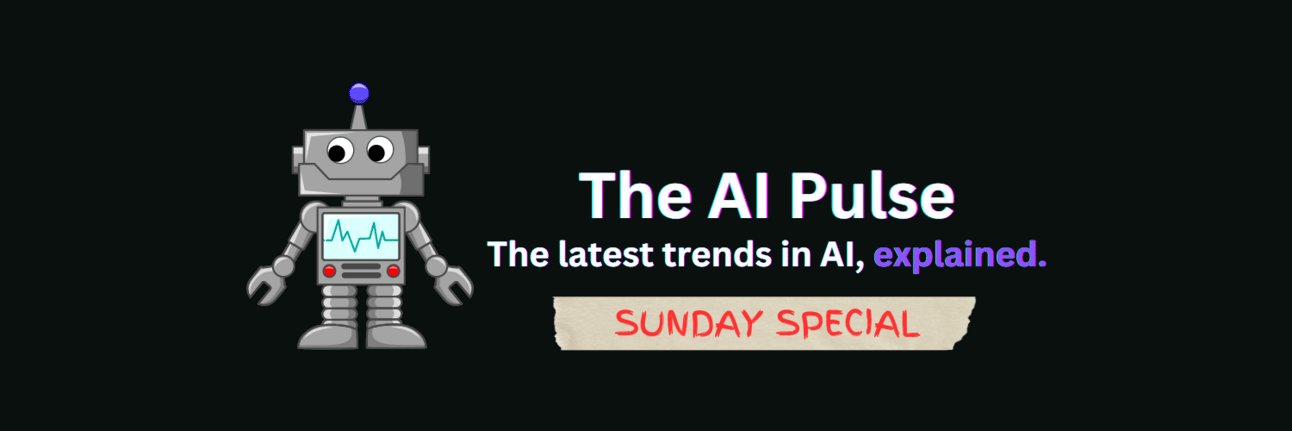
Welcome back AI prodigies!
In today’s Sunday Special:
🌎AI and Global Inequality
🧫Arresting Antibiotics
🍼Unveiling Ultrasounds
Read Time: 6 minutes
🎓Key Terms
Supercomputing: solving data-intensive problems by concentrating the power of several computers to train AI models.
Foundation Models: AI models trained on broad datasets that developers can customize for specific use cases (e.g., OpenAI’s GPT models).
Fluorescence Microscopy: a microscopy technique that magnifies the appearance, location, and movement of molecules (e.g., antibodies) within cells.
🌎AI AND GLOBAL INEQUALITY
At the end of 2023, Bill Gates made several innovation predictions. At the crux of his outlook was an idea so timeless that it’s worth repeating. He remarked, “Innovation is the key to getting the most out of every dollar spent.” The world’s needs are infinite, but the resources to meet them aren’t. Productivity, efficiency, and scale improve the world, but they tend to perpetuate existing cross-border inequalities.
Societies most likely to innovate and reap the benefits require the fewest new products and services. This statement is especially true for AI innovation. An analysis by Joe White and Serena Cesareo of Tortoise Media scored countries on AI intensity and scale. They condensed 111 indicators into three key pillars:
Implementation
Talent: availability of AI engineers, data scientists, and researchers.
Infrastructure: electricity, internet, computing, and supercomputing ability.
Operating Environment: Regulatory environment and public opinion on AI.
Innovation
Research: credibility and publishing record of specialist academics.
Development: foundation models and algorithms that undergird AI applications.
Investment
Government Strategy: fiscal spending on the Association for the Improvement of American Infrastructure (AIAI), research, or ventures.
Commercial: the startup ecosystem and private investments in AI advancements.
When measuring AI intensity (e.g., quality and proliferation of consumer and enterprise AI models) relative to country size, Singapore, Israel, and Switzerland come out on top. When quantifying AI scale (e.g., a nation’s ability to create AI-driven output globally), the US and China are well ahead of the pack. American AI will likely win in the West (i.e., North America and Western Europe) as Big Tech integrates AI into its ubiquitous distribution channels. Thanks to the Belt and Road Initiative, Chinese AI will increase its global sphere of influence, encompassing Asia (except India), Africa, and South America (except Brazil). Despite these winner-take-all dynamics, developing nations have embarked on ambitious AI projects.
🧫ARRESTING ANTIBIOTICS
In Ghana, death from Antimicrobial Resistance (AMR) persists. AMR occurs when patients take antibiotics to fight disease, and pathogens subsequently develop antibiotic resistance, undermining the ability to treat minor and severe infectious diseases. According to the World Health Organization, AMR contributed to nearly 5 million deaths in 2019, or a whopping 20% of all mortalities worldwide. Further, a UK study forecasted 10 million annual AMR deaths by 2050.
Fortunately, Ghana’s Aurum Institute uses AI to predict which antibiotics will not contribute to AMR. Training the recommendation system requires local data on clinical guidelines, the prevalence of resistant pathogens, and the susceptibility of the patient to suggest optimal drugs, dosages, and durations. Though gathering accurate, thorough health surveillance data will pose a challenge, identifying resistant pathogens will not. Thanks to research led by Achillefs Kapanadis of the University of Oxford, AI models, coupled with fluorescence microscopy, can detect whether or not a pathogen is susceptible to AMR in just 30 minutes. Though this prediction technique was 80% accurate, the proportion of false negatives (e.g., the model predicts an antibiotic will destroy a pathogen, but it won’t) remains to be determined. Nevertheless, Kapanadis’s findings will inform Ghana’s anti-AMR AI recommendation tool.
🍼UNVEILING ULTRASOUNDS
Another heart-wrenching healthcare inequity proliferates in India, where mothers die at 5X the rate of their American counterparts due to pregnancy-related complications. Said differently, every twenty minutes, an Indian mother passes away during childbirth. One Indian nonprofit advancing AI-enabled reproductive care is ARMMAN (i.e., Advancing Reduction in Mortality and Morbidity of Mothers, Children, and Neonates), which shares pregnancy guidance, ultrasound results, and doctor debriefs via text message due to the lack of computer access in rural and low-income areas. ARMMAN is building a Large Language Model (LLM) to help doctors and family members alike identify pregnancy risks before they spiral out of control. Though these recommendations will help pregnant mothers, they fail to diagnose fetus-related complications. And since some corners of the world, including parts of rural India, lack adequate equipment to administer ultrasounds and ample radiologists to interpret results, AI-powered ultrasounds are a game-changer.
First, how exactly do ultrasounds work? They see with sound. When sounds occur, molecules vibrate, creating waves. Each wave contains peaks, and the distance between two peaks is the wave’s frequency, or the number of cycles per second. Ultrasounds detect sound waves exceeding 20,000 cycles per second, far beyond our vocal or hearing capabilities. We use transducers to convert these high-frequency sound waves into pictures of a fetus. If you’re curious, learn more from this short, two-minute YouTube video here.
The process of image generation, plus the analysis and interpretation, is automated by AI. Though only preliminary studies with small sample sizes are public, Bill Gates, who’s funding ARMMAN’s initiative, claims that AI-powered ultrasounds “accurately identify high-risk pregnancies” and beat humans at estimating the gestational period. And unlike other healthcare applications, practitioners don’t have to worry about racial bias, as sound waves don’t discriminate. Nevertheless, the number of potential lives (e.g., mothers and fetuses) saved from enhanced ultrasounds remains murky, as accuracy, cost, and distribution present formidable hurdles.
🩺 PULSE CHECK
How will the global adoption of AI affect inequality?
- Exacerbate economic inequality. Gains trickle down to impoverished nations.
- Reduce economic inequality. Free AI tools and internet access level the playing field.
- Exacerbate health inequity. Funding moonshot initiatives prevents mortality reduction.
- Reduce health inequity. As energy costs plummet, AI-assisted healthcare scales.
📒FINAL NOTE
If you found this useful, follow us on Twitter or provide honest feedback below. It helps us improve our content.
How was today’s newsletter?
❤️AI Pulse Review of The Week
“AI is present in the healthcare industry for data collection. You should narrow the focus to AI models studying diseases for biotechnology development.”
🎁NOTION TEMPLATES
🚨Subscribe to our newsletter for free and receive these powerful Notion templates:
⚙️150 ChatGPT prompts for Copywriting
⚙️325 ChatGPT prompts for Email Marketing
📆Simple Project Management Board
⏱Time Tracker
